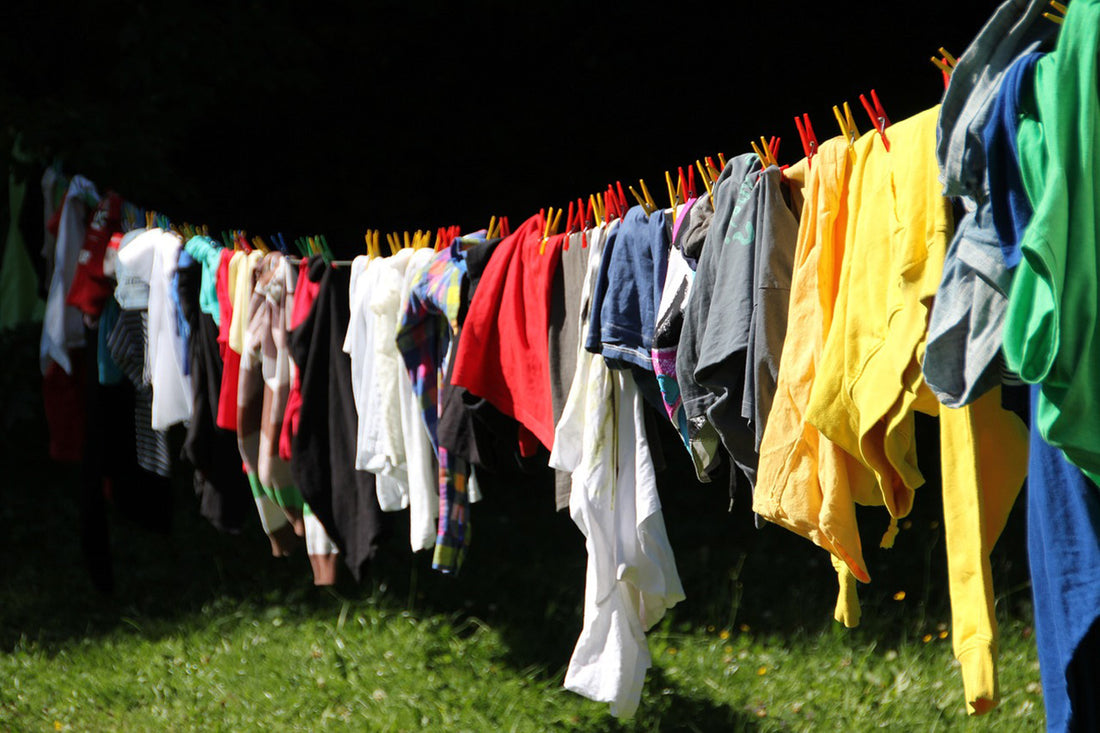Have you ever noticed that your favorite shirt mysteriously becomes smaller after you wash it? There’s nothing worse than opening the washer or dryer to find out that your favorite t-shirt or jersey has suddenly become too small for you to wear.
But fear not, there is a reason for this happening and by understanding why it happens, we can help you prevent your shirts from shrinking in the future.
So, grab your detective hat and let's dive into the mysterious world of magically shrinking shirts!
Most Common Fabrics that Shirts are Made of
Before we unveil the reason why your shirts are coming out of the wash smaller than when they went in, let's take a quick look at the materials commonly used in shirts.
Shirts are crafted using various different fabrics, each with their unique properties. Cotton, polyester, and blends of these materials are the most common materials you’ll find being used in your shirts and t-shirts.
Cotton
Cotton is a natural fiber known for its breathability and comfort. It's a popular choice for shirts as it feels soft against the skin and allows air to circulate. Cotton shirts are also known for their ability to absorb moisture, keeping you cool on hot summer days.
Polyester
Polyester, on the other hand, is a synthetic fiber known for its durability and wrinkle-resistance. It's often blended with cotton to enhance the strength and shape retention of shirts. Polyester fibers can withstand repeated washes and retain their color well.
Why Do Shirts Shrink After Going in the Wash?
Now that we know the two most common types of fabric used in shirts, let's take a look at what may cause those materials to lose their original shape and shrink in the wash.
The primary culprit behind shrinkage lies in the nature of these fabrics and the way they interact with water and heat.
Hot and Warm Water
Heat plays a significant role in the shrinking process. When you wash your shirts in warm or hot water, the heat causes the fibers in the fabric to relax and become more flexible. This relaxation allows the fibers to move more freely which can lead to the contraction and shrinking of the fabric.
Agitation During the Wash Cycle
One cause of shrinkage during the wash cycle may come as surprise to most people, and that’s the agitation of the clothing itself.
When the machine agitates, it causes friction between the fibers in the fabric, making them rub against each other. This rubbing motion, coupled with the heat and moisture during the wash cycle, encourages the fibers to shrink further. Thankfully washing machines typically have a gentle cycle which can help reduce the friction during washing.
Drying – Combining Heat, Agitation, and Moisture
Now that we’ve looked at the wash cycle, let's talk about drying.
When you throw your wet shirt into the dryer, you expose it to more heat and friction as the dryer spins. This combination of heat, agitation, and moisture in the dryer amplifies the shrinkage effect of your shirts. The fibers can contract even further, thus leading to a decrease in size when removed.
What Can You Do To Help Prevent Your Shirts from Shrinking?
While you cannot entirely eliminate shrinkage, you can minimize it. Here are some handy tips to help you preserve the size of your shirts:
- Water Temperature: Instead of using warm or hot water during the wash cycle use cold water. Cold water is less likely to cause significant shrinkage compared to warm or hot water because we’re eliminating some of the heat from the cycle.
- Gentle Cycle: Opt for a gentle or delicate cycle on your washing machine if it has one. This cycle minimizes agitation, reducing the chances of excessive shrinkage through friction.
- Air Drying: Instead of tossing your shirt into the dryer, try air drying. Lay your shirt flat on a clean surface or hang it to dry. This method is gentler on the fabric and reduces the risk of shrinkage.
- Follow Care Instructions: Always check the care label on your shirt. Manufacturers provide specific instructions to help you maintain the clothing’s integrity. Following these instructions will ensure that your shirt stays in top shape.
Never Be Surprised by a Small Shirt Again!
Heat, agitation, and moisture team up inside the washing machine to transform your beloved shirt into a smaller version of itself. By using cold water, gentle cycles, and air drying, you can protect your shirts from excessive shrinkage.
Remember, though, a little shrinkage isn't always a bad thing. Sometimes you may buy a shirt in a larger size to ensure that it fits well over time, and a little shrinkage may help it fit better. You may also want a shirt to shrink a little bit if your body type doesn’t always fit typical shirts. Longer arms or longer torsos can sometimes make it hard to find shirts that fit your body type, in which case a little shrinkage may help.
Some fabrics are pre-shrunk during manufacturing to minimize further shrinkage, so even if you accidentally wash a shirt on high heat, you may not notice a lot of shrinkage, just be sure to read the manufacturer notes on the tag to know exactly how you should be washing it.
If you’re truly concerned about shrinking your shirts the best thing to do is to wash them in cold water on a gentle cycle, and then hang dry them instead of using the dryer. This will help keep your clothes the right size and help keep the colors from fading over time as well.

